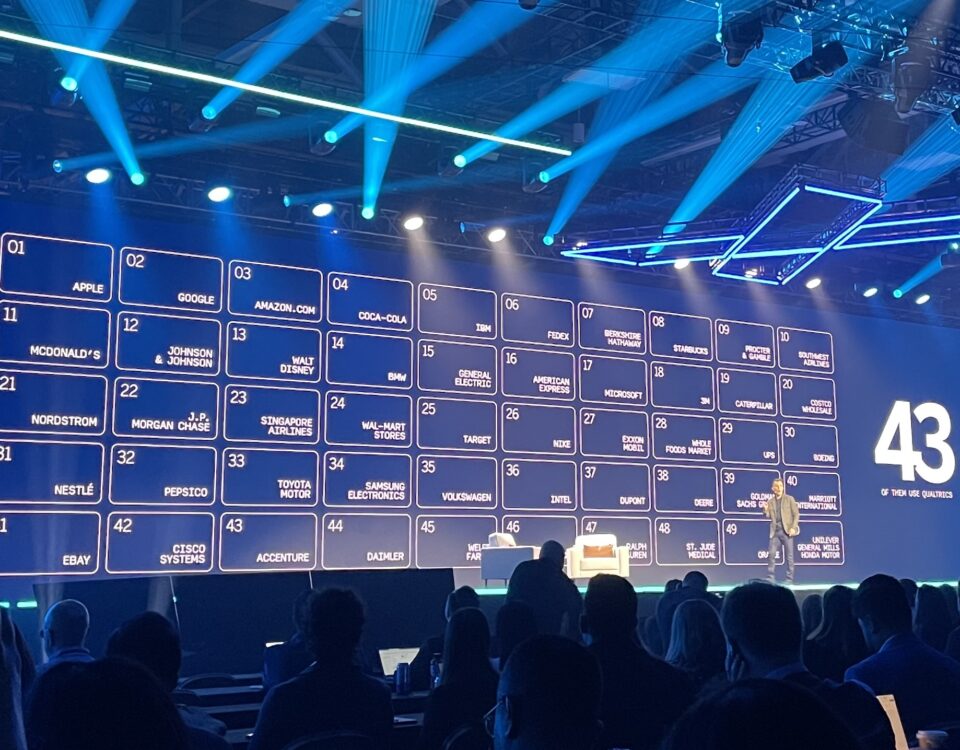
The six core elements of ROCKSTAR customer experience – Interview with James Dodkins
February 18, 2019
An Emotional Connection – The Key To Customer Loyalty
March 4, 2019Analytics isn’t something you buy, it is something that you do – Interview with Larry Skowronek of NICE
Today’s interview is with Larry Skowronek, Vice President Product Management and Product Marketing at NICE, a worldwide leading provider of software solutions enabling organizations to improve customer experience, ensure compliance, fight financial crime, and safeguard people and assets. Larry joins me today to talk analytics and about some new technology that they have developed that can monitor interactions & provide a holistic view of the customer journey from start to finish, route inbound calls to the most appropriate representative through analyzing how the customer sounds and how they can track sentiment over time to enhance the customer experience and cater to evolving customer demands.
This interview follows on from my recent interview – The six core elements of ROCKSTAR customer experience – Interview with James Dodkins – and is number 295 in the series of interviews with authors and business leaders that are doing great things, providing valuable insights, helping businesses innovate and delivering great service and experience to both their customers and their employees.
Here’s the highlights of my chat with Larry:
- We’re seeing all sorts of stats and predictions from various sources that predict that by 2020 or so as many as 85 percent of all customer service interactions are going to be handled without the need for a human agent.
- Larry doesn’t really believe that statistic/prediction.
- What we will see are more and more interactions being handled by artificial intelligence powered machines. But, what we are also seeing is that human to human interactions are becoming increasingly important.
- Machines are taking the easy jobs and automating the easy interactions. But, the hard ones are being left for people.
- Many think that the advent of this type of technology will result in a fall in call volumes. However, that’s not the case. In fact, call volumes are staying steady because agents are handling more complex situations.
- Phone calls still have a hugely important role to play in delivering the experience that the customer wants.
- NICE have been busy developing technology that can monitor interactions & provide a holistic view of the customer journey from start to finish, route inbound calls to the most appropriate representative through analyzing how the customer sounds and how they can track sentiment over time to enhance the customer experience and cater to evolving customer demands.
- All of this helps organizations make the interactions they have with their customers more empathetic.
- Intelligent routing is like that the ultimate application of analytics at the point of engagement.
- What they are doing is analyzing the communication style and the personality style of the consumer and understanding what type of a communicator they are. They are then matching them up to an agent who is the best fit for that type of communicator.
- Their approach is based on the Process Communication Model which was developed by NASA in the 1970s.
- One client just by matching the communication styles of the agent and the consumer saved an average of 7 percent of their total communication time on phone calls, which if you aggregate that up that amounts to a heap of time saved.
- Another business used the same approach and was able to improve their overall customer satisfaction by 5 percent.
- In practice, what happens is that the first time a customer calls the machine listens to that person and figures out what their personal communication style is and then records that. So, the next time they call up and via number recognition, they can route them to the most appropriate and best matching agent.
- When tracking sentiment a lot of companies are using Natural Language Processing (NLP), where they are converting voice to text and then analyzing the words. The problem with that is that it can also strip out the tone, pitch and volume elements in voices which play a huge part in communication.
- It’s hard to do audio analysis over the phone due, in large part, to the quality of the audio.
- Instead Larry and his team took several hundred thousand phone calls and matched those with after call survey data. By applying machine learning to this problem they were able to predict what words were predictive of a positive or a negative survey result.
- That allowed them to come up with a sentiment model.
- What was most interesting about what they discovered was that the pitch and tone elements don’t really have a lot of weight in the prediction of positive or negative outcomes. It’s the words that customers use that are better predictors.
- This may have something to do with the type of conversations that customers are having with organisation and that they are more transactional/functional in nature.
- Many organizations are now using this sentiment model and are using it in all sorts of ways from how they measure and manage the performance of agents to correlating sentiment to other business outcomes like improved retention, resolution or close rates.
- Another piece of technology that they have developed is a smart customer journey mapping platform which allows them to model all of the different journeys people go on, how they get things done, figure out what a really good journey looks like and which journeys result in the outcome you want and don’t want.
- Their platform also allows them to build those journeys too and customise them to different types of customer groups.
- Finally, their pure play raw analytic set of technologies include new capabilities that apply artificial intelligence and machine learning to do things like uncover new topics that customers are talking about, how those relate to each other, identify what’s anomalous, what’s what’s new, what’s different and what’s changed.
- There’s a lot of people in customer experience that are building slightly “Frankenstein-esque” customer experiences with their technology stack right now.
- Analytics isn’t something you buy, it is something that you do.
- Organizations that approach analytics as building an expertise in their organization and work towards building a capability that allows them to take decisions that are data-driven are the ones who succeed.
About Larry
 Larry Skowronek serves as Vice President Product Management and Product Marketing at NICE, a worldwide leading provider of software solutions enabling organizations to improve customer experience, ensure compliance, fight financial crime, and safeguard people and assets.
Larry Skowronek serves as Vice President Product Management and Product Marketing at NICE, a worldwide leading provider of software solutions enabling organizations to improve customer experience, ensure compliance, fight financial crime, and safeguard people and assets.
Larry was the Senior Vice President of Products at Nexidia, Inc when they were acquired by NICE in 2016. Prior to that he has held positions at Genesys, Informiam, Aspect Software and TCS Management Group, Inc.
He holds a Degree in Philosophy, with a minor in Science and Technology Studies, from Williams College.
Find out more about NICE here, say Hi to Larry and the folks at NICE and Nexidia on Twitter @NexidiaLarry, @NICELtd, @Nexidia and connect with Larry on LinkedIn here.
..
..
Thanks to GDJ for the image on Pixabay.




